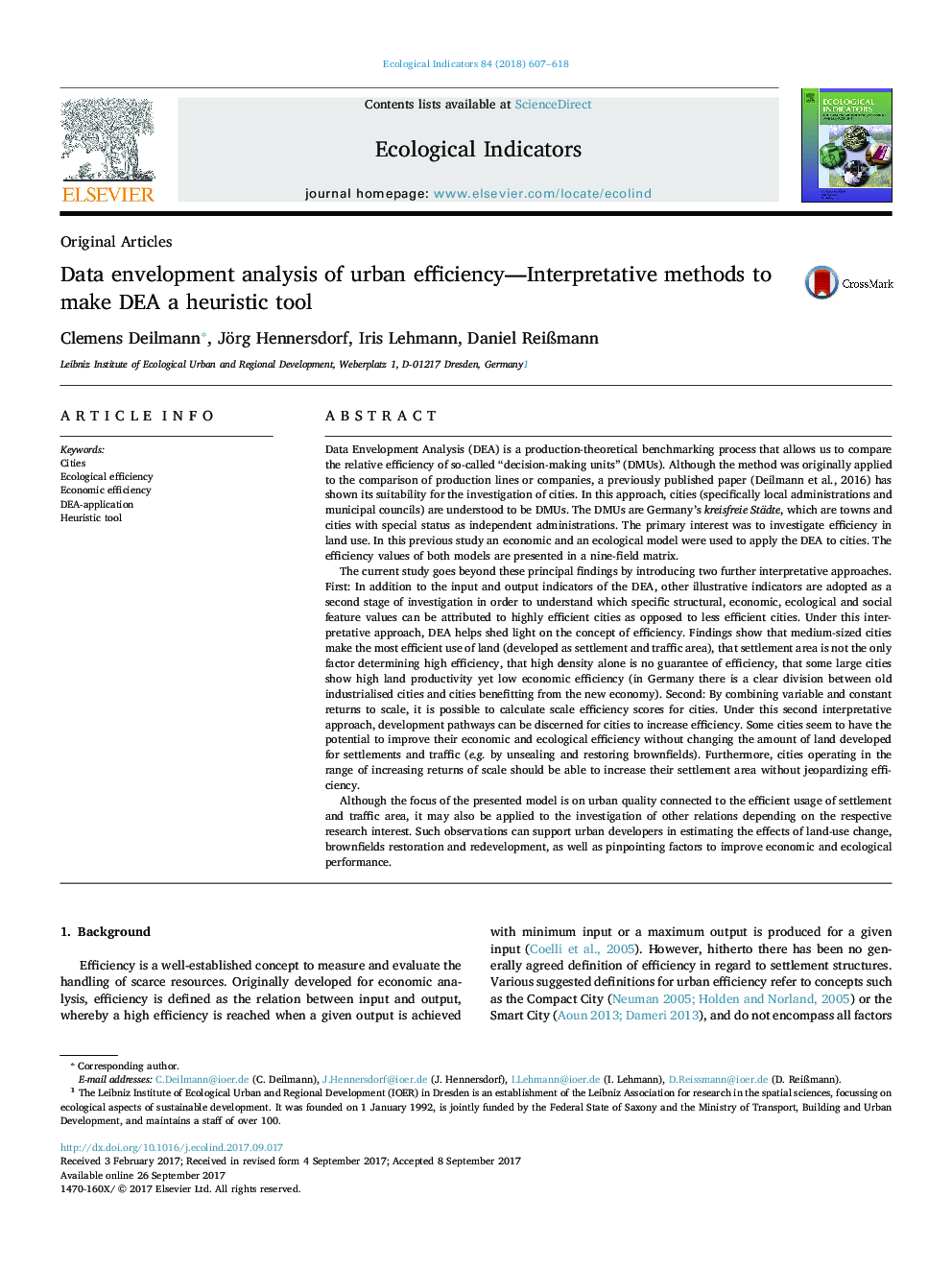| کد مقاله | کد نشریه | سال انتشار | مقاله انگلیسی | نسخه تمام متن |
|---|---|---|---|---|
| 5741584 | 1617118 | 2018 | 12 صفحه PDF | دانلود رایگان |

- Devised for the field of production economics, the DEA model can be successfully transferred to the analysis of cities.
- DEA allows to investigate model external additional indicators to improve the understanding of urban efficiency.
- Scale efficiencies and determination of the range in which the city operates offers indications how to increase the overall efficiency.
- Results can assist in issues of land-use planning by helping to estimate and resolve questions of efficiency under the DEA model.
- Medium-sized cities make the most efficient use of land, high density alone is no guarantee of efficiency.
Data Envelopment Analysis (DEA) is a production-theoretical benchmarking process that allows us to compare the relative efficiency of so-called “decision-making units” (DMUs). Although the method was originally applied to the comparison of production lines or companies, a previously published paper (Deilmann et al., 2016) has shown its suitability for the investigation of cities. In this approach, cities (specifically local administrations and municipal councils) are understood to be DMUs. The DMUs are Germany's kreisfreie Städte, which are towns and cities with special status as independent administrations. The primary interest was to investigate efficiency in land use. In this previous study an economic and an ecological model were used to apply the DEA to cities. The efficiency values of both models are presented in a nine-field matrix.The current study goes beyond these principal findings by introducing two further interpretative approaches. First: In addition to the input and output indicators of the DEA, other illustrative indicators are adopted as a second stage of investigation in order to understand which specific structural, economic, ecological and social feature values can be attributed to highly efficient cities as opposed to less efficient cities. Under this interpretative approach, DEA helps shed light on the concept of efficiency. Findings show that medium-sized cities make the most efficient use of land (developed as settlement and traffic area), that settlement area is not the only factor determining high efficiency, that high density alone is no guarantee of efficiency, that some large cities show high land productivity yet low economic efficiency (in Germany there is a clear division between old industrialised cities and cities benefitting from the new economy). Second: By combining variable and constant returns to scale, it is possible to calculate scale efficiency scores for cities. Under this second interpretative approach, development pathways can be discerned for cities to increase efficiency. Some cities seem to have the potential to improve their economic and ecological efficiency without changing the amount of land developed for settlements and traffic (e.g. by unsealing and restoring brownfields). Furthermore, cities operating in the range of increasing returns of scale should be able to increase their settlement area without jeopardizing efficiency.Although the focus of the presented model is on urban quality connected to the efficient usage of settlement and traffic area, it may also be applied to the investigation of other relations depending on the respective research interest. Such observations can support urban developers in estimating the effects of land-use change, brownfields restoration and redevelopment, as well as pinpointing factors to improve economic and ecological performance.
Journal: Ecological Indicators - Volume 84, January 2018, Pages 607-618